Want to learn more about the professional traits of your website visitors? Are you using LinkedIn's Website Demographics tool?
In this article, you'll discover how to use LinkedIn Website Demographics to reveal useful information about people who visit your website.
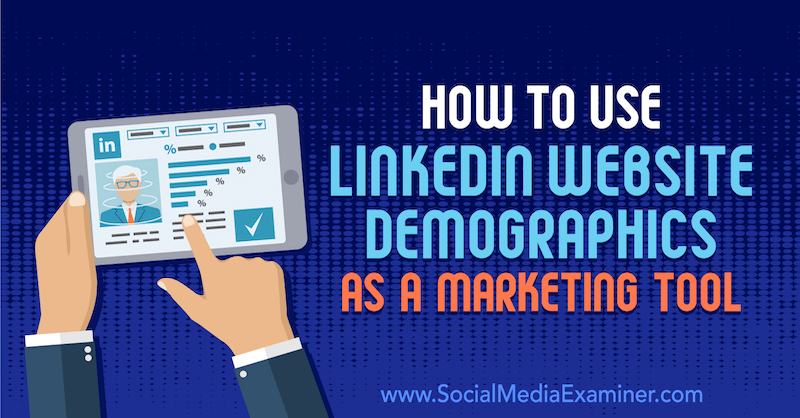
Why Use LinkedIn Website Demographics?
What marketers want is a way to understand who their website visitors are. This demographic data is generally available only when visitors convert and leave their personal information on your web forms. But what about all of the people who don't convert? You know, the bulk of your website traffic.
The LinkedIn insight tag, a snippet of JavaScript code you add to your website, is intended to be used by LinkedIn advertisers to track conversions. In addition, it gives you access to Website Demographics, a free reporting tool that provides information about the people who visit your site.
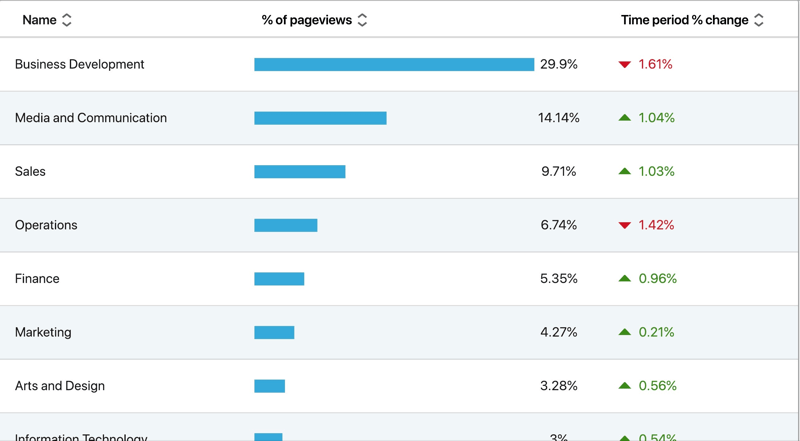
While account-based marketing (ABM) integrations rely on IP information and third-party data to understand who visitors are, LinkedIn is more accurate in identifying users because it relies on its own user data. This means LinkedIn can provide more information at a higher accuracy rate than most ABM systems can.
The best thing about the Website Demographics tool is that it's free. You need to have a LinkedIn ads account but you don't have to actually run any ads to gain access to the insights.
With this tool, you can get insights for your website as a whole or specific pages (which is helpful if you have multiple products and various types of consumers). Here's how to get started.
#1: Install the LinkedIn Insight Tag
To get data from LinkedIn Website Demographics, you need to install the insight tag on your site. To do this, open your LinkedIn ads account and select Insight Tag from the Account Assets drop-down menu.
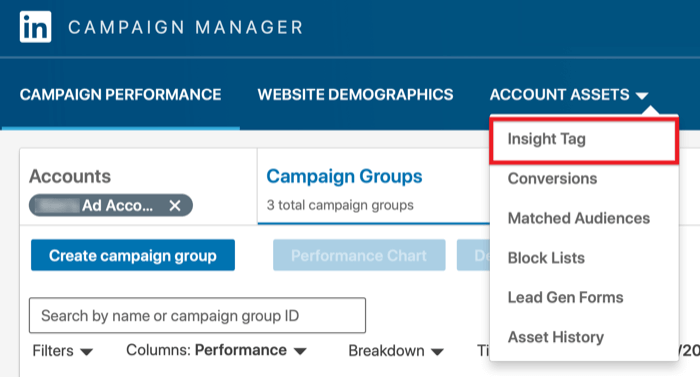
Next, you see three options for installing the tag. You can install it yourself, send it to your web developer via email, or set it up in Google Tag Manager.
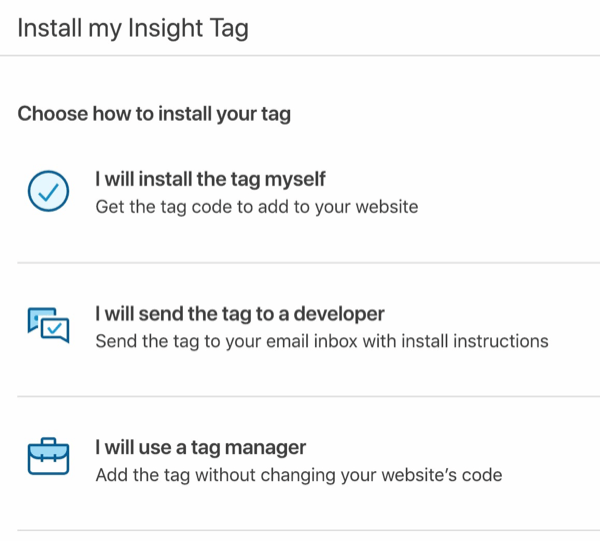
After you've added the insights tag to your site, it will start collecting data about your website visitors. Once enough data is collected, it will start providing you with insights.
Pro Tip: Most people use the insight tag on their main website but you can place the tag on any web property you own—other sites you own, your subdomains, and so forth. Just make sure you segment the properties so you can view them individually.
Get World-Class Marketing Training — All Year Long!
Are you facing doubt, uncertainty, or overwhelm? The Social Media Marketing Society can help.
Each month, you’ll receive training from trusted marketing experts, covering everything from AI to organic social marketing. When you join, you’ll also get immediate access to:
- A library of 100+ marketing trainings
- A community of like-minded marketers
- Monthly online community meetups
- Relevant news and trends updates
#2: View Your LinkedIn Website Demographics Data
While LinkedIn won't disclose personal information in compliance with privacy policies, Website Demographics provides information about your website visitors' job functions and titles, industry information, company names and sizes, and more.
The data LinkedIn provides closely matches the targeting options available in Campaign Manager so you can use these insights to build your LinkedIn campaigns.
To view this data, click the Website Demographics tab in the toolbar at the top of Campaign Manager.

Before diving into the data, keep these points in mind:
- The data provided is based on web visits so it includes visits that are paid and visits you get from PR, social posts, and other sources.
- While you can use the insights for both B2B and B2C, the data relies on users having a LinkedIn account. You won't see data for visitors who LinkedIn can't match to its database.
- The data doesn't currently take into account actions taken on your site such as signups or purchases; only visits to a page.
So before you review the data for specific dates, first try to understand what traffic sources are sending traffic to your site or specific pages to ensure the data is as clean and organic as possible.
A common mistake is running a LinkedIn campaign targeting a specific audience like CEOs of shipping companies, and then being surprised when you view the web demographics. Of course you will see CEOs as the top visitors and shipping as the top industry, leading you to invest more in targeting CEOs of shipping companies.
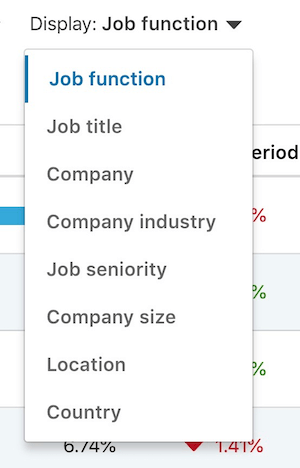 Making sure the insights you take away are as unbiased as possible will allow you to build campaigns for actual prospects rather than reinforce campaigns for the wrong audiences you may have previously attempted to target.
Making sure the insights you take away are as unbiased as possible will allow you to build campaigns for actual prospects rather than reinforce campaigns for the wrong audiences you may have previously attempted to target.
To learn more about LinkedIn users who have viewed your web pages, LinkedIn lets you filter your website demographics data by:
- Job function
- Job title
- Company
- Company industry
- Job seniority
- Company size
- Location
- Country
Job seniority data can help you gain an understanding of how informative your web content should be.

Discover Proven Marketing Strategies and Tips
Want to go even deeper with your marketing? Check out the Social Media Marketing Podcast! Publishing weekly since 2012, the Social Media Marketing Podcast helps you navigate the constantly changing marketing jungle, with expert interviews from marketing pros.
But don’t let the name fool you. This show is about a lot more than just social media marketing. With over 600 episodes and millions of downloads each year, this show has been a trusted source for marketers for well over a decade.
To illustrate, if a majority of your audience is of low seniority, you may want to focus on providing an industry overview with your product solution. A higher seniority audience would not need as much education.
You can use the company size data to gain a better understanding of what kind of customers are visiting your site.
If you're attracting small companies but selling an enterprise product, for instance, you could reduce your paid spend with better targeting or improve your messaging to attract enterprise and deter smaller companies. One way to do this might be to add pricing to your messaging (“pricing starts at $X”).
#3: Apply Website Visitor Data to Improve Your LinkedIn Marketing
Now that you have all of these amazing insights into your website visitors, here are some ways you can use this information for your business and marketing efforts.
Tailor your blog content to your audience's needs and preferences. Make readers feel like the content was made for them.
Use these insights to build your customer personas. Then find placements on other sites to target these audiences. For example, if your visitors' top job title is engineer and top industry is high-tech, you might look for tech blogs focused on engineering.
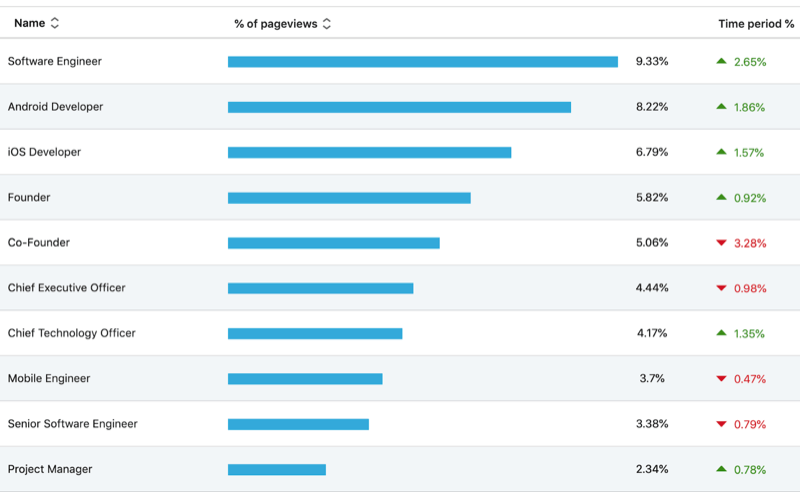
It's important to note that LinkedIn doesn't give you the option to cross-reference the data so you might want to look at additional data points such as your owned customer lists to confirm your assumptions.
Validate your targeting. It's easy to spend thousands of dollars of ad spend and get traffic to your website but how do you know if that traffic is what you were aiming for?
The Website Demographics tool can help you validate the quality of your advertising platform and ensure it's providing you with the type of audience you actually want. To do this, you need to run an isolated experiment. The idea is to place the insight tag on a landing page and use the insights to validate the traffic.
Start by creating a landing page that's hidden from search engines. This is important because you want to ensure that the only traffic reaching your page is the traffic you send there. Then add the LinkedIn insight tag to your landing page.
Build your LinkedIn ad campaigns with the targeting you want to test and run your campaigns until there's enough traffic for the insight tag to present data. Then review the website demographics data and see how the insights match against your paid targeting.
Reveal customer segment traits by product preference. While you can't view data based on a site action—say, people who converted on a specific page—you can create audiences for your thank-you pages.
Simply create a new website audience and enter your thank-you page URL. This will give you insights for all of the people who visited those pages after converting. For this tactic to work well with sites that sell multiple products, it's best to have a separate thank-you page URL for each product.
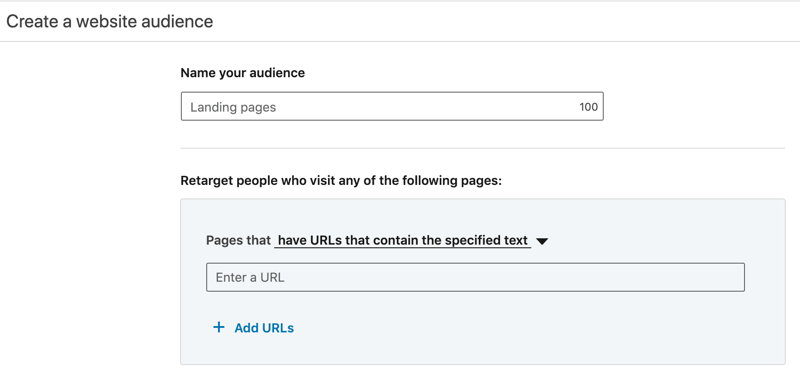
Identify shared customer traits. Compare your thank-you pages' data with the corresponding product pages and look for correlations of demographics from visitors who convert. These are the ones you want to improve on and find more traffic sources for.
At the same time, flag the demographics that don't match up. These might be ones you want to work on narrowing traffic from.
Optimize your LinkedIn ad campaign targeting. Using the industry and job function/title data, research those positions to gain an understanding of what that audience may be interested in. Then use that information to improve your ad copy and messaging to better appeal to those personas.
Naturally, you can use the data to build your LinkedIn advertising campaigns. You'll find it very easy to translate the insights into LinkedIn campaigns. As previously mentioned, the insight data correlates well with the LinkedIn targeting options.
There are, however, some targeting options still missing from the data such as member skills and interests. While you should use these insights to build some of your LinkedIn campaigns, don't let it blind you to the other options. One of my favorites is targeting by member groups.
Conclusion
For companies looking for a simple solution to get meaningful insights about their customers and prospects, LinkedIn Website Demographics is a great place to start.
This high-impact tool can give you deep insights into your website traffic that doesn't convert, as well as the traffic that does. With a very easy implementation process and at no direct financial cost, LinkedIn Website Demographics is a true gem.
Like every data point, it's not what you know but how you use it. To get the most out of this tool, you'll need to invest time in understanding the data, correlating it, and finding the best ways to use it for your business. Adding Website Demographics to your marketing tool stack can provide a missing piece of the puzzle.
More articles on LinkedIn marketing:
- Learn how to target your prospects and customers using Matched Audiences on LinkedIn.
- Find out how to get LinkedIn leads without advertising.
- Discover features that will give you more visibility on LinkedIn.
Attention Agency Owners, Brand Marketers, and Consultants

Introducing the Marketing Agency Show–our newest podcast designed to explore the struggles of agency marketers.
Join show host and agency owner, Brooke Sellas, as she interviews agency marketers and digs deep into their biggest challenges. Explore topics like navigating rough economic times, leveraging AI, service diversification, client acquisition, and much more.
Just pull up your favorite podcast app, search for Marketing Agency Show and start listening. Or click the button below for more information.

